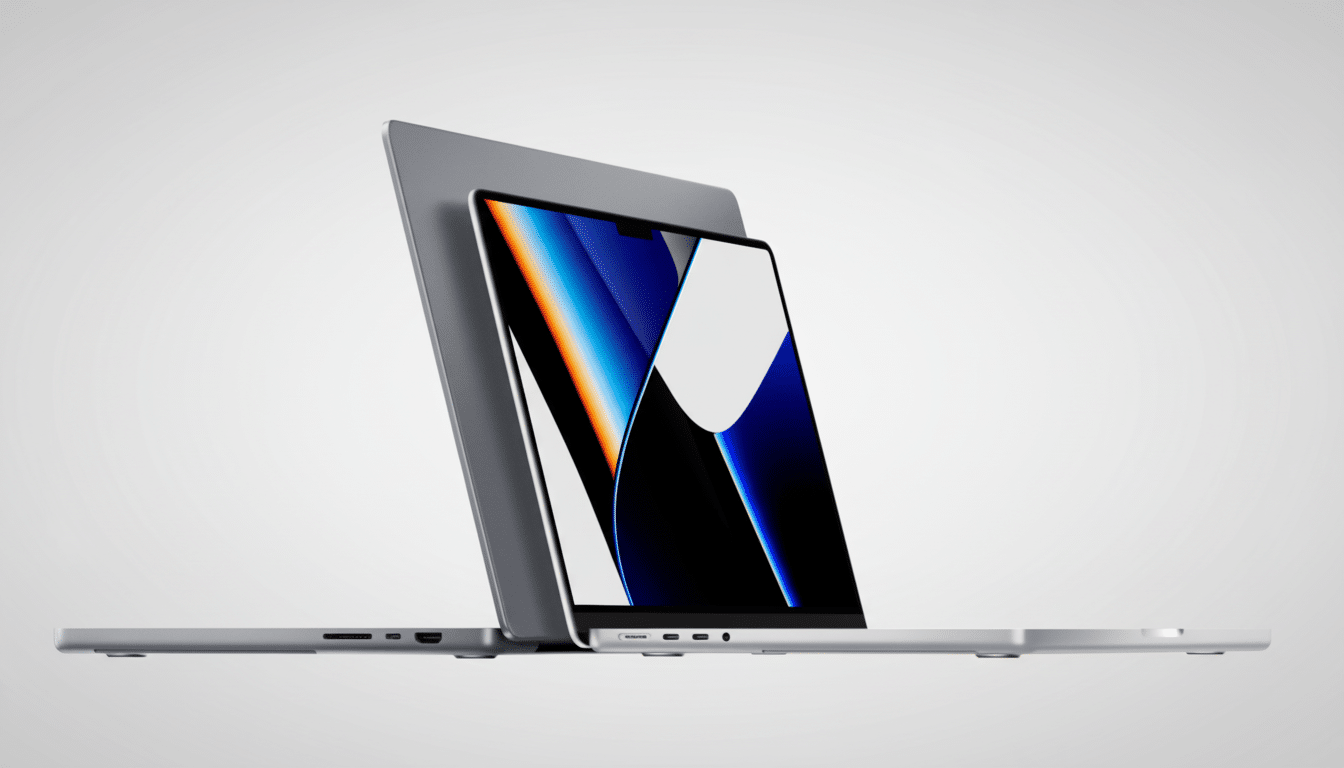Apple’s next silicon milestone is arriving in the 14‑inch MacBook Pro, with the M5 chip poised to power the company’s most popular pro‑size notebook. The move represents an aggressive lunge toward faster on‑device AI, larger graphics gains, and higher memory bandwidth inside a portable form factor that many creative pros and developers favor.
What the Apple M5 Means for the 14‑inch MacBook Pro
Apple is marketing M5 as a game changer for the 14‑inch MacBook Pro’s everyday and pro workflows. The company says that compute performance increases up to four times faster than the previous generation in certain tests, thanks to updated CPU cores, a speedier Neural Engine, and quadruple unified memory bandwidth. That combination adds up in the 14‑inch chassis, where smart power management often trumps raw wattage for maintaining performance and quiet thermals.

On a practical basis, we’d hope heavier projects on the first wave will be significantly lighter — scrubbing multi‑stream ProRes timelines, compiling large Xcode projects, pushing dense Lightroom masks, and especially churning through complex 3D scenes should all get a shot in the arm. Combined memory bandwidth is a specific win for creators who move large assets around — textures, video frames, and model weights can be handed off to the CPU, GPU, and NPU with fewer traffic jams.
AI workloads get a native speed shot out of the box
Apple has been focused on on‑device intelligence across its platforms, and M5 is designed to advance that undertaking. The second‑generation 16‑core Neural Engine, along with new on‑device machine learning accelerators in the CPU and a dedicated graphics card, is built to process more complex patterns while running powerful models for large language models, video generation, and audio transcription on‑device at lower latency and increased energy efficiency. This means snappier Apple Intelligence features and faster inference for apps that are built on Core ML, according to Apple.
For everyday users, that may result in more responsive writing guidance, real‑time photo edits, and better voice features — no connection required. For pro apps, you can expect more throughput with local LLMs and faster upscales and object removal in editors — as well as the ability to analyze background media on ingest. Apple’s vision for privacy, which is all about keeping sensitive data on‑device, directly benefits from that extra headroom.
Modern workflows, graphics, and dedicated media engines
Apple claims the M5’s next‑gen GPU provides a ‘substantial’ performance bump for real‑time visuals and compute‑intensive effects. Developers leveraging Apple’s Metal APIs should benefit from smoother gameplay, more realistic lighting and materials in your 3D apps, and faster viewport rendering in content‑creation tools. The dedicated media engines — one of our strengths on the M‑series for so many years — speed ProRes and other modern codecs, slashing export and transcode times while making life smoother on the road for videography teams.

Crucially, these gains are achieved without exceeding the thermal limits of the 14‑inch model. Apple’s value proposition since the M1 has been about quietly sustaining performance; the M5’s efficiency story suggests longer bursts at higher clocks before fans start to spin, and that matters in classrooms, edit bays, and conference rooms.
Who gets it first, in the MacBook Pro lineup
And it’s the first Mac notebook to get M5, according to Apple. But not every configuration is being altered at once. Ars Technica’s reporting also notes that both higher‑end 14‑inch configurations, as well as the 16‑inch MacBook Pro, are absent from the initial wave of releases; it is obvious that Pro and Max‑class variants will follow their own course.
Apple also positioned M5 as part of a platform play across other devices, such as iPad Pro and Apple Vision Pro. That cross‑device consistency has been one of the hallmarks of the M‑series and gives developers a single performance target for AI and graphics features across all screens. TSMC’s industry‑leading 3‑nanometer process technology is responsible for these types of power and bandwidth gains, according to analysts from TrendForce, which has been tracking TSMC’s steady improvements in the same process. (Apple has not publicly specified its exact node.)
What the 14‑inch MacBook Pro with M5 means for buyers
And if you’re using an Intel MacBook Pro — or even an early M1 system — the 14‑inch M5 is looking likely to shape up into a genuinely speedy, responsive, and long‑lived upgrade. Developers compiling big projects, photographers working with heavy batches of images, and video editors cutting HDR footage should see the largest lift. Recent M‑series users who struggle without the best GPU or maximum unified memory may wish to wait for Pro and Max versions before making a new purchase.
Apple’s silicon story has been a metronome for the Mac: year after year of predictable, tangible improvements that focus as much on efficiency as they do peak performance. With M5, the 14‑inch MacBook Pro is where this approach is shown in its ideal form: AI‑optimized, graphics‑forward, and tuned for real work in a portable profile. As Bloomberg’s hardware coverage has said on multiple occasions in recent cycles, the company’s control over the stack — from chip to frameworks — frequently turns raw specs into real‑world speed. The M5 looks on track to do the same for Apple’s most flexible pro laptop.

